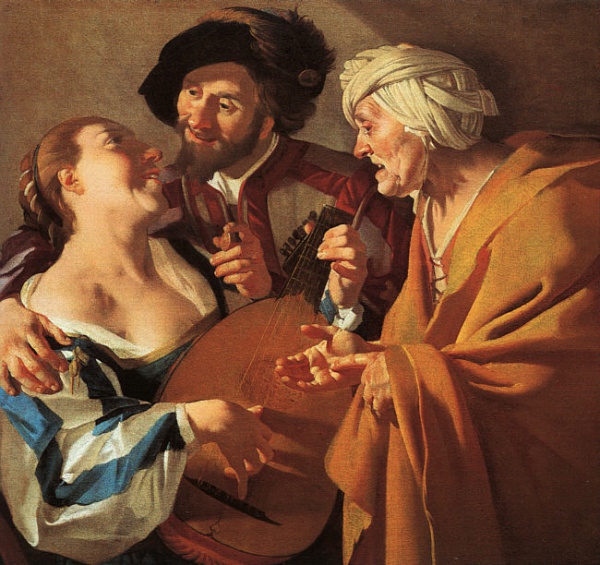Facts About The Procuress
"The Procuress" is a captivating series of paintings by Dirck van Baburen, a distinguished artist from the Dutch Golden Age. Baburen was affiliated with the Utrecht school and was known for painting in the dramatic Caravaggesque style. The artwork typically features three characters: a prostitute, a client, and a procuress. In the scene, the client holds a coin while embracing the prostitute, who is playing a lute. This genre of painting, known as "Bordeeltjes" depicts brothel scenes.
Several versions of "The Procuress" exist, some attributed directly to Baburen or his studio. One notable copy was owned by Maria Thins, the mother-in-law of the illustrious painter Johannes Vermeer. Vermeer was so inspired by this piece that he included it in the background of some of his own works. Another version, once held by the Courtauld Institute, was famously identified as a forgery by the notorious art forger Han van Meegeren.
Vermeer’s incorporation of "The Procuress" into his paintings highlights a distinct contrast. While Baburen’s work is recognized for its raw and realistic portrayal, Vermeer’s adaptations are more refined and genteel, reflecting a shift in his artistic focus.
The story of the Courtauld Institute's version is particularly intriguing. Initially thought to be a genuine van Meegeren forgery, a 2009 scientific study suggested it might actually be authentic. However, further investigation revealed that the painting contained Bakelite, a modern material used by van Meegeren, thereby confirming it as a forgery. Interestingly, this painting is now considered more valuable as a van Meegeren forgery than it would have been as a 17th-century studio copy.

 Canada
Canada